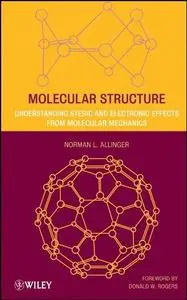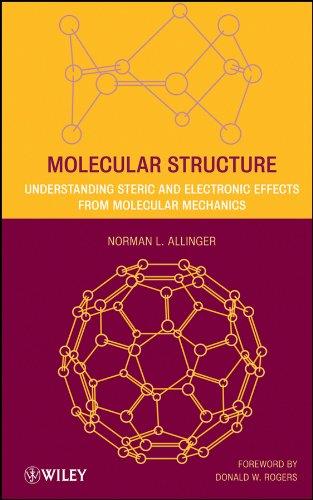Molecular Structure By Norman L. Allinger(auth.)
2010 | 349 Pages | ISBN: 0470195576 | PDF | 5 MB
2010 | 349 Pages | ISBN: 0470195576 | PDF | 5 MB
A guide to analyzing the structures and properties of organic molecules Until recently, the study of organic molecules has traveled down two disparate intellectual paths—the experimental, or physical, method and the computational, or theoretical, method. Working somewhat independently of each other, these disciplines have guided research for decades, but they are now being combined efficiently into one unified strategy. Molecular Structure delivers the essential fundamentals on both the experimental and computational methods, then goes further to show how these approaches can join forces to produce more effective analysis of the structure and properties of organic compounds by: Looking at experimental structures: electron, neutron, X-ray diffraction, and microwave spectroscopy as well as computational structures: ab initio, semi-empirical molecular orbital, and molecular mechanics calculations Discussing various electronic effects, particularly stereoelectronic effects, including hyperconjugation, negative hyperconjugation, the Bohlmann and anomeric effects, and how and why these cause changes in structures and properties of molecules Illustrating complex carbohydrate effects such as the gauche effect, the delta-two effect, and the external anomeric torsional effect Covering hydrogen bonding, the CH bond, and how energies, especially heats of formation, can be affected Using molecular mechanics to tie all of these things together in the familiar language of the organic chemist, valence bond pictures Authored by a founding father of computational chemistry, Molecular Structure broadens the scope of the subject by serving as a pioneering guide for workers in the fields of organic, biological, and computational chemistry, as they explore new possibilities to advance their discoveries. This work will also be of interest to many of those in tangential or dependent fields, including medicinal and pharmaceutical chemistry and pharmacology.Content: Chapter 1 Introduction (pages 1–6): Chapter 2 Experimental Molecular Structures (pages 7–27): Chapter 3 Molecular Structures by Computational Methods (pages 28–50): Chapter 4 Molecular Mechanics of Alkanes (pages 51–91): Chapter 5 Conjugated Systems (pages 92–133): Chapter 6 “Effects” in Organic Chemistry (pages 134–161): Chapter 7 More “Effects”—Negative Hyperconjugation (pages 162–188): Chapter 8 Additional Stereochemical Effects in Carbohydrates (pages 189–211): Chapter 9 Lewis Bonds (pages 212–238): Chapter 10 Crystal Structure Calculations (pages 239–256): Chapter 11 Heats of Formation (pages 257–300):



